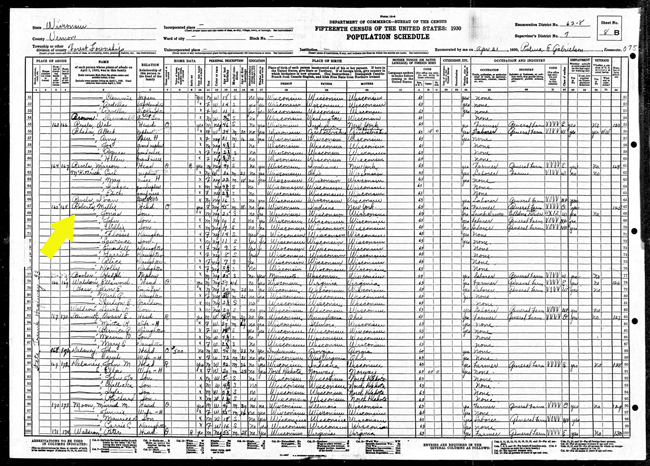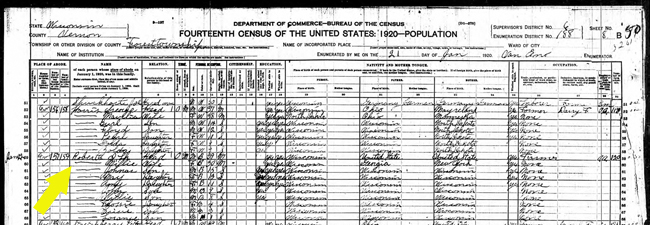Local History Topics
Cheyenne Valley
Museum Notes
For the week of 1/31/2021
by Kristen Parrott, curator
To learn more about the racial heritage of people who lived here decades ago, researchers often turn to census records. The most recent federal census available to the public is the one from 1940, and the oldest dates to 1790. Each census has asked different questions about the population, but all of them have asked about race. However, when it comes to an issue as subjective as “race”, the information we get from the census records is of varying value.
Before 1960, the census takers determined how a person’s racial category was recorded, not the person being counted. Maybe the enumerators looked at you and guessed, or maybe you weren’t at home right then so they looked at your family members and guessed. Sometimes they were given official directions on how to determine a person’s race, such as in 1930, when they were told that a person with any African-American ancestry should be listed as “Negro”.
Historically, the census records have not made it easy to record mixed-race heritage. There wasn’t a space to list more than one race for an individual until the census of 2000. Some past censuses used the term “mulatto” to indicate that a person was of mixed-race heritage. Clearly our country has had a multi-racial population throughout the entire history of the census, but that information wasn’t specifically recorded in the past.
Here is a local example of using racial data from a census. When I looked at the 1930 U.S. census for Town of Forest, the story of Millie Roberts really caught my attention – a Black female farmer with nine children at home, plus a grown nephew, and no husband in the household. This was an unusual profile for a Vernon County family at that time.

Millie Roberts listed in the 1930 Town of Forest census.
Using materials in our archives, I was able to flesh out her story a little more. Milbra May Revels was born in the Town of Forest in 1884. Her parents were Mark and Cornelia (Winchell) Revels. On some census records Mark is listed as mulatto, and on others as Black, while Cornelia is listed as white; their children are listed as any of these three, depending on the census taker.
Millie grew up in the Town of Forest and attended Salem School. In 1903 she married Isaac Roberts, who had also been born in the Town of Forest, in 1878. Census records describe him, and his parents and siblings, as white. Until he marries Millie, that is. After their marriage, Isaac and Millie and their children are listed as mulatto, or Black, or Negro, depending on the census and the enumerator.

Isaac Roberts listed in the 1900 Town of Forest census as White (W).

Isaac and Millie Roberts listed in the 1910 Town of Forest census as Mulatto (Mu).

Isaac and Millie Roberts listed in the 1920 Town of Forest census as Black (B).
This seems very subjective, and not very helpful. One thing that does become clear when looking through the racial data from the 1930 Town of Forest census is that the area was very diverse, with many interracial marriages. Usually when one parent is listed as “Negro” and the other as “white”, any of their children are also listed as Negro, in line with the instructions given to the census takers at that time. But a close examination of the photographed records shows that sometimes the children were originally listed as white, with their race changed later – by whom? A supervisor at a later date? Or by the census-taker on that day, when a darker-skinned resident walked through the door?
I’d like to know more about the lives that these people lived, what their cultural practices were, how they were treated in and outside of their community. The racial data confusion brings up many questions, and also highlights our country’s long conflicted history over race. Whether or not Millie thought of herself as African American, I find her story inspiring. At a time when women were considered “weaker”, she raised 15 children primarily by herself, all while running her own farm. Sounds like strength to me.

 MENU
MENU